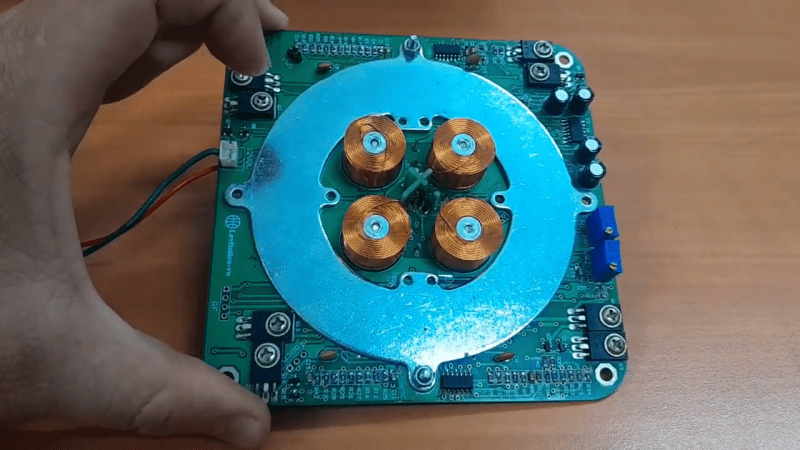Magnetic levitation has not quite revolutionized the world of transit the way some of us might have hoped. It has, however, proven useful to [mrdiytechmagic], who has put the technology to grand use in making his levitating snail lamp.
The build is actually relatively complicated compared to some levitating toys you might have seen before. It uses a number of coils to produce a magnetic field to levitate the 3D printed plastic snail which contains the lighting element itself.
The actively controlled levitation base uses a magnetic sensor to detect the changing field as the snail moves above it. It then varies the current going to the various coils to keep the snail balanced and in place. Power is transmitted with a further larger coil, much as in a wireless phone charger. This is picked up by a circuit in the snail, and used to power the LEDs inside.
It might not have been our first choice, but having seen it in action, we can’t deny a levitating 3D printed snail is pretty impressive. If you’d prefer something slightly more befitting such a high-tech looking presentation, perhaps a hovering SpaceX Starship would be more your speed.

















Similar but floating nixie clock: https://hackaday.com/2016/07/31/you-may-have-a-nixie-tube-clock-but-can-yours-levitate/
I’ve never played with those AI narration tools. Do you get knobs to turn for “earnest” or “animated”?
It’s impressive to see how far they’ve come. I wonder what Dennis Klatt would think of the current state.
This seems really the future when it comes to providing electricity, as long as you can generate the same amount of electricity you do by current means. We don’t want areas with blackouts at certain times of the days and places like hospitals need never worry again, what with the electricity coming through the mains generated by magnets and a back-up magnetic generator that can power the whole hospital. Just in case there’s a fault wiring fault or something similar. Hospitals tend to have some kind of back-up generators anyway. Apart from the machines themselves (ones that can produce up to 15KW of electricity at 240V 50Hz) I can’t see it as a gianormous money making project though because once the machine has been sold, that’s it. No doubt certain very clever people might even able to make these generators themselves. I can imagine a lot of videos online that go into detail about how you make one and how you decide the wattage output, volts output and hertz output. Who can run out of magnets. The only problem I can see is a lot of digging to get loads of metal up as well as other places. This world is going to need a LOT of metal and building magnetic generators isn’t the only thing we use metal for. People with pacemakers would have to be careful. It’s possible they could make an insulated pacemaker that’s affected by nearby magnets. All this is way down the line though. It also seems that you can make your magnetic generator/motor as powerful as you want without making it oversized.
The poster seems to be under the misconception that this is a free energy device.
For the record, it isn’t. This thing takes more energy than an equivalent light would, with the flotation coils and active circuitry requiring power, and presumably some power is lost in efficiency in the wireless transmission to the light.
“This seems really the future when it comes to providing electricity, as long as you can generate the same amount of electricity you do by current means.”
Future?
Wasn’t Nikola Tesla promoting this over a century ago?